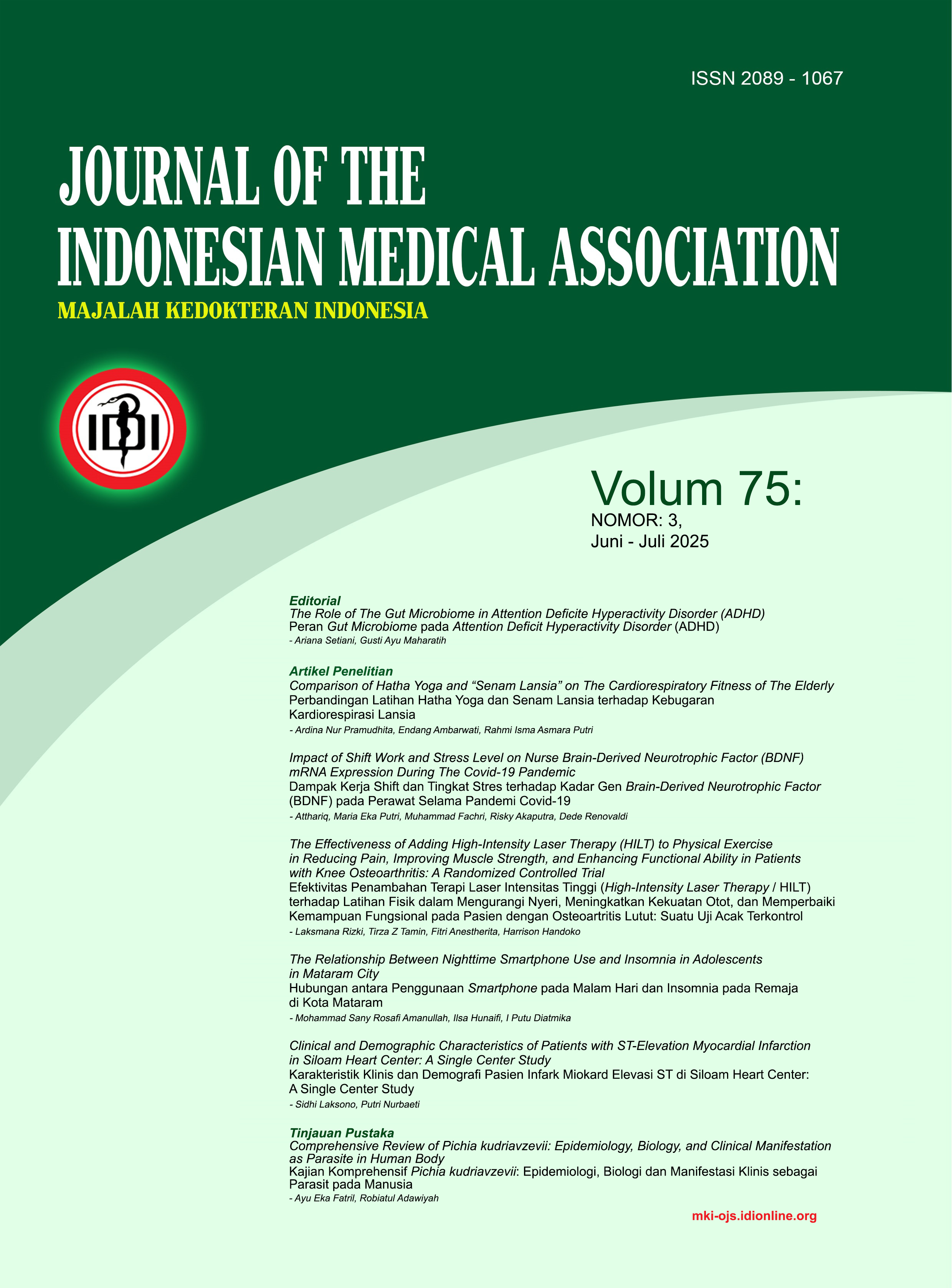Comprehensive Review of Pichia kudriavzevii: Epidemiology, Biology, and Clinical Manifestation as Parasite in Human Body
Abstract
Pichia kudriavzevii previously known as Candida krusei, is a non-conventional yeast commonly found in the environment and widely utilized in the fermentation industry. Besides its industrial benefits, P. kudriavzevii also acts as an opportunistic pathogen that can cause severe infections, particularly in immunocompromised individuals. This study is a literature review analyzing the epidemiology, biology, pathogenicity, immune response and clinical manifestations associated with P. kudriavzevii. Relevant literature was collated from databases such as PubMed, Scopus, and Google Scholar, selected based on article relevance and quality. The review findings indicate that P. kudriavzevii is among the five most common Candida species that infect humans, particularly in patients with compromised immune systems, cancer, hematologic malignancies, diabetes mellitus, and those undergoing prolonged antibiotic or corticosteroid therapy. Biologically, P. kudriavzevii exhibits high tolerance to extreme environmental conditions, possesses biofilm-forming capabilities and demonstrates intrinsic resistance to fluconazole. Infections caused by P. kudriavzevii, reffered to as candidiasis krusei, range from mucocutaneous infections (oral/oropharyngeal candidiasis, vaginal candidiasis, and cutaneous candidiasis) to invasive candidiasis which can be life-threatening. The increasing incidence of P. kudriavzevii infections and its antifungal resistance demand greater attention in developing effective diagnostic and therapeutic strategies. Further studies are essential to elucidate its resistance mechanisms and explore alternative therapeutic approaches for improving clinical management.
Downloads
 Viewer: 582 times
Viewer: 582 times
 PDF (Bahasa Indonesia) downloaded: 357 times
PDF (Bahasa Indonesia) downloaded: 357 times











